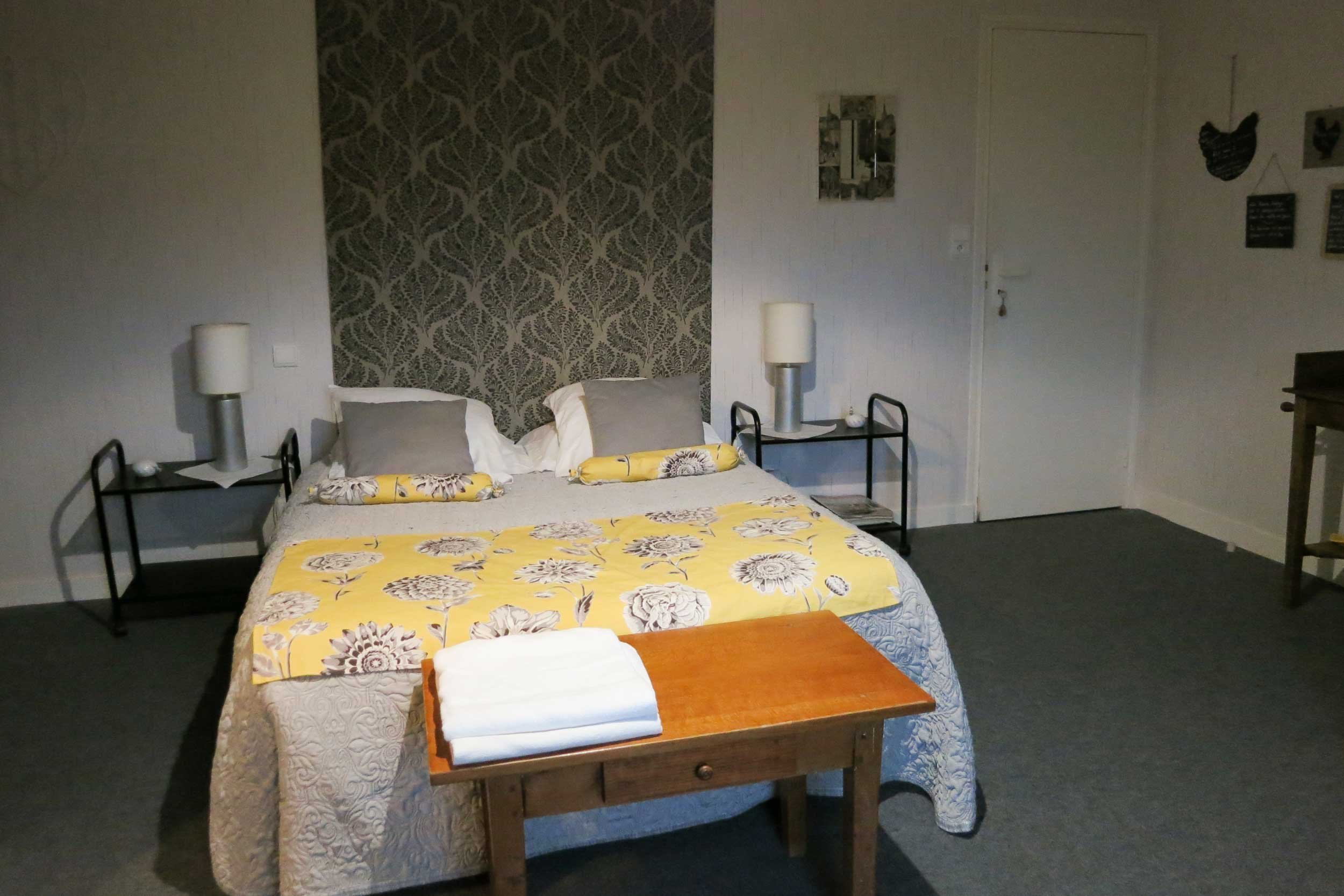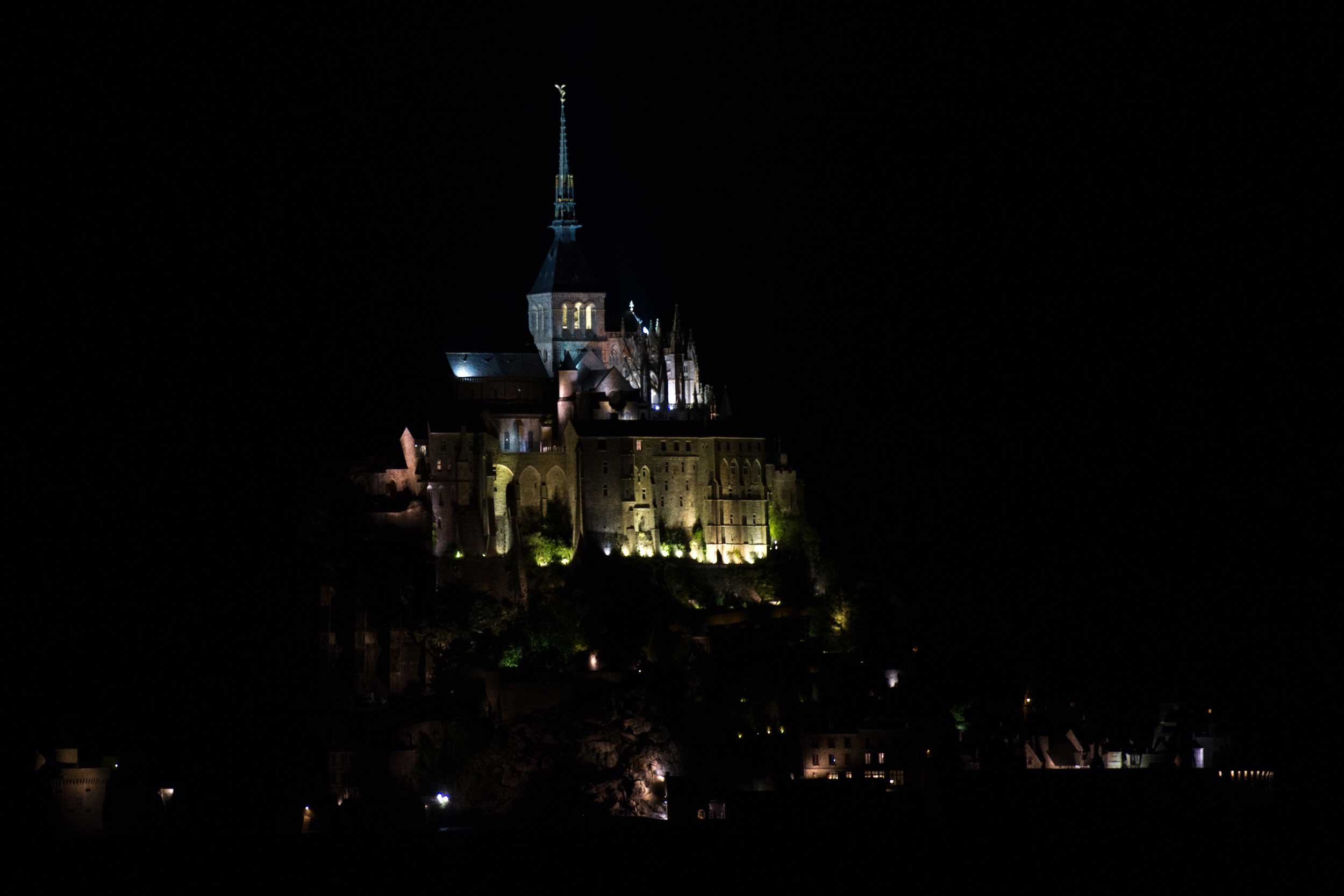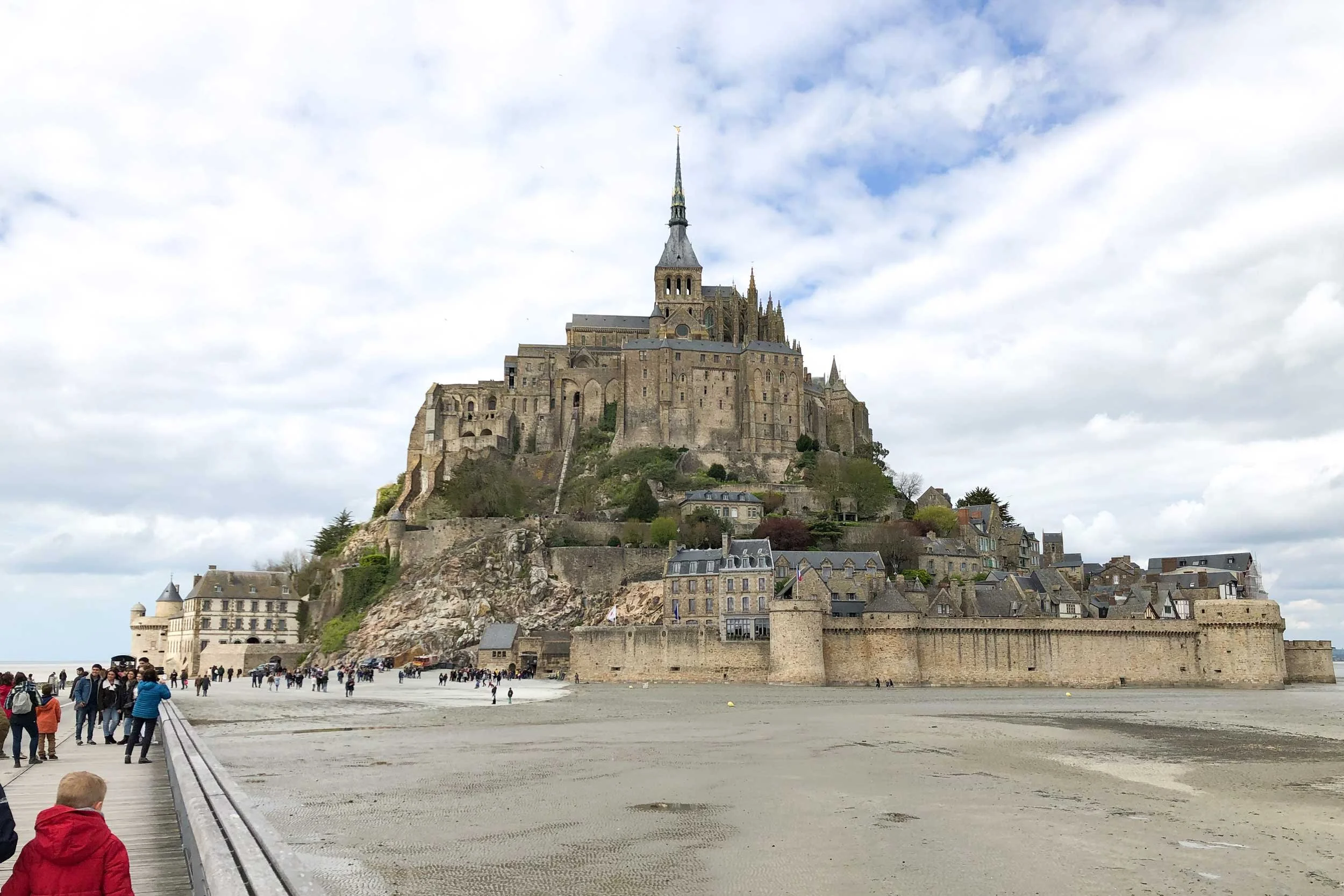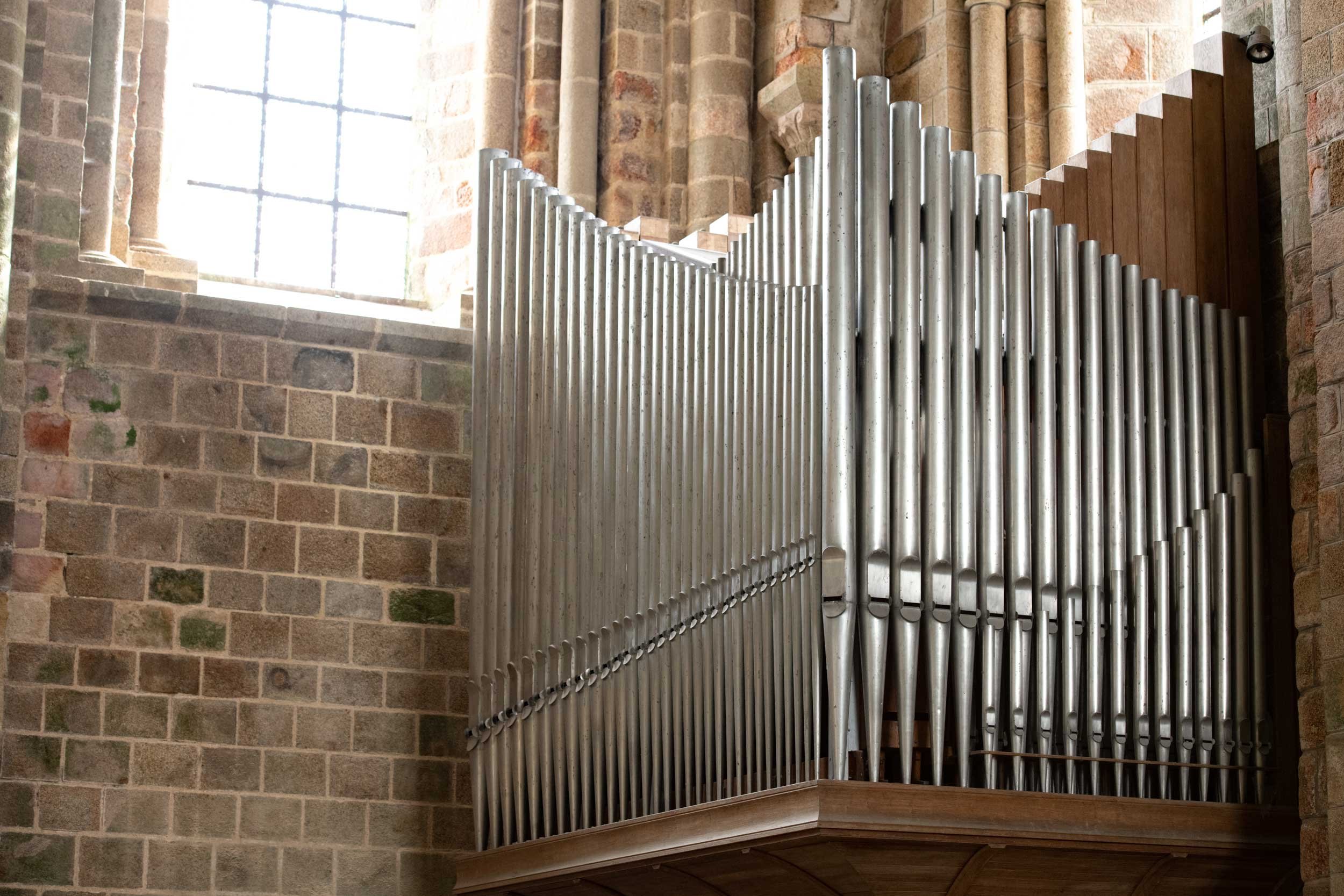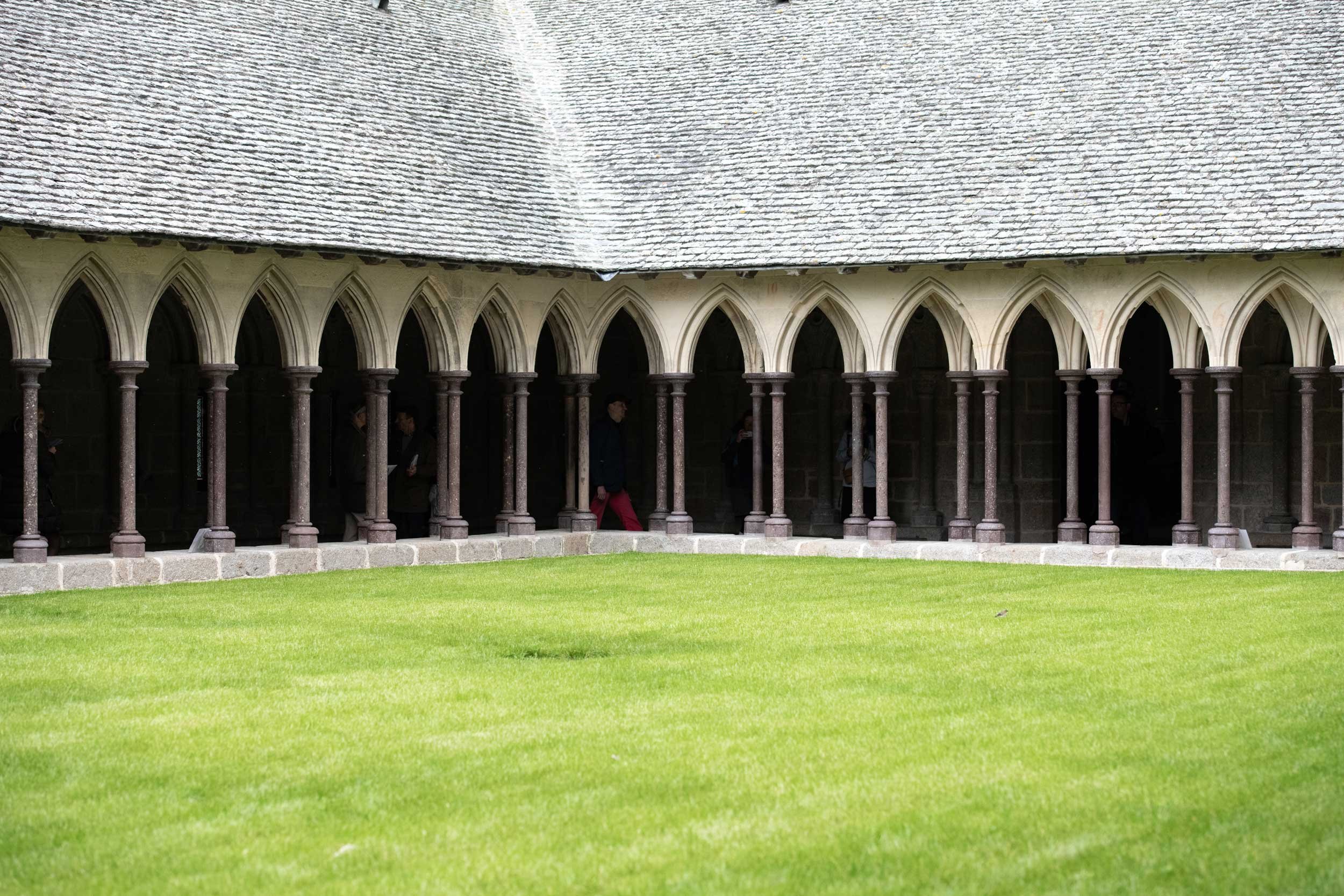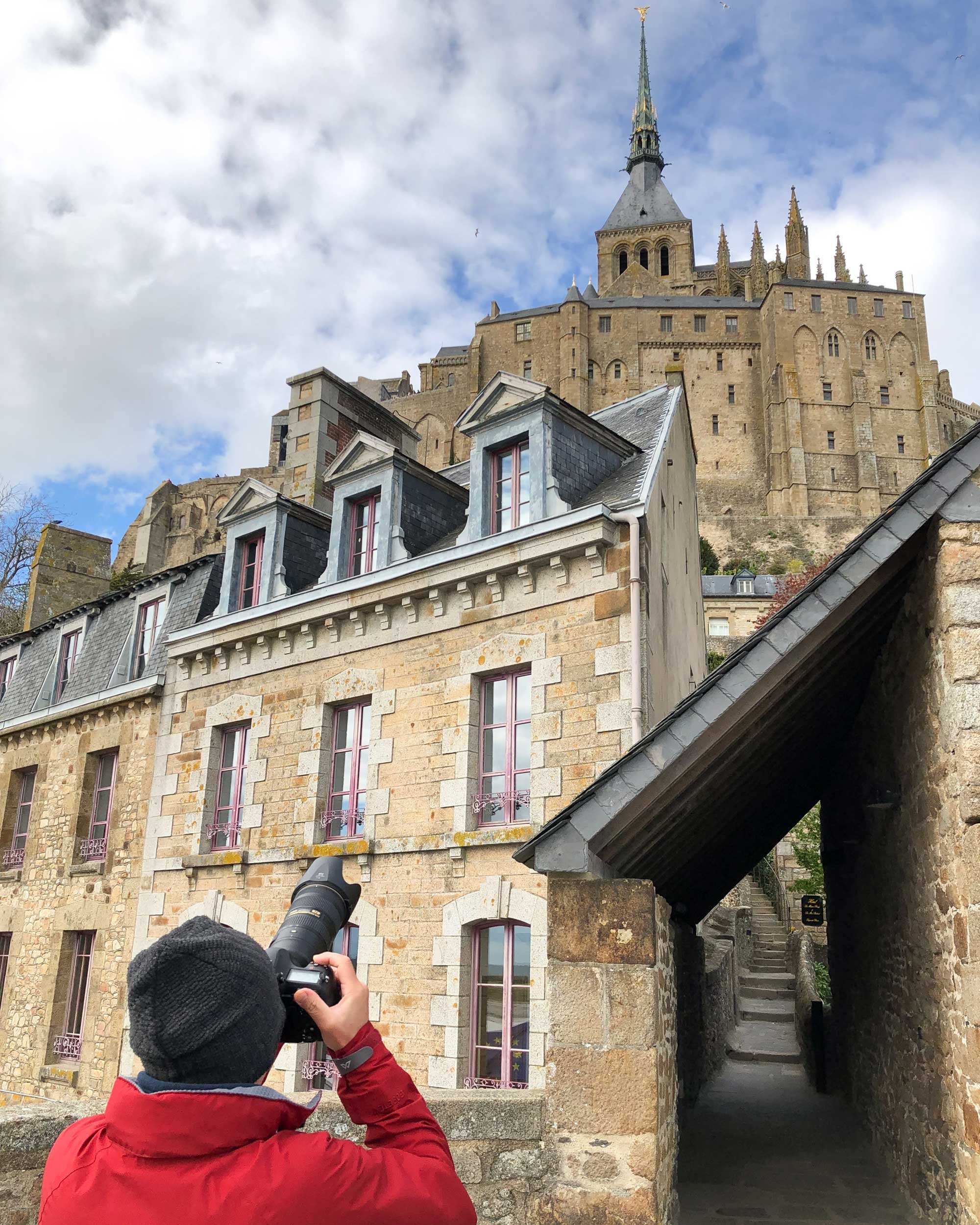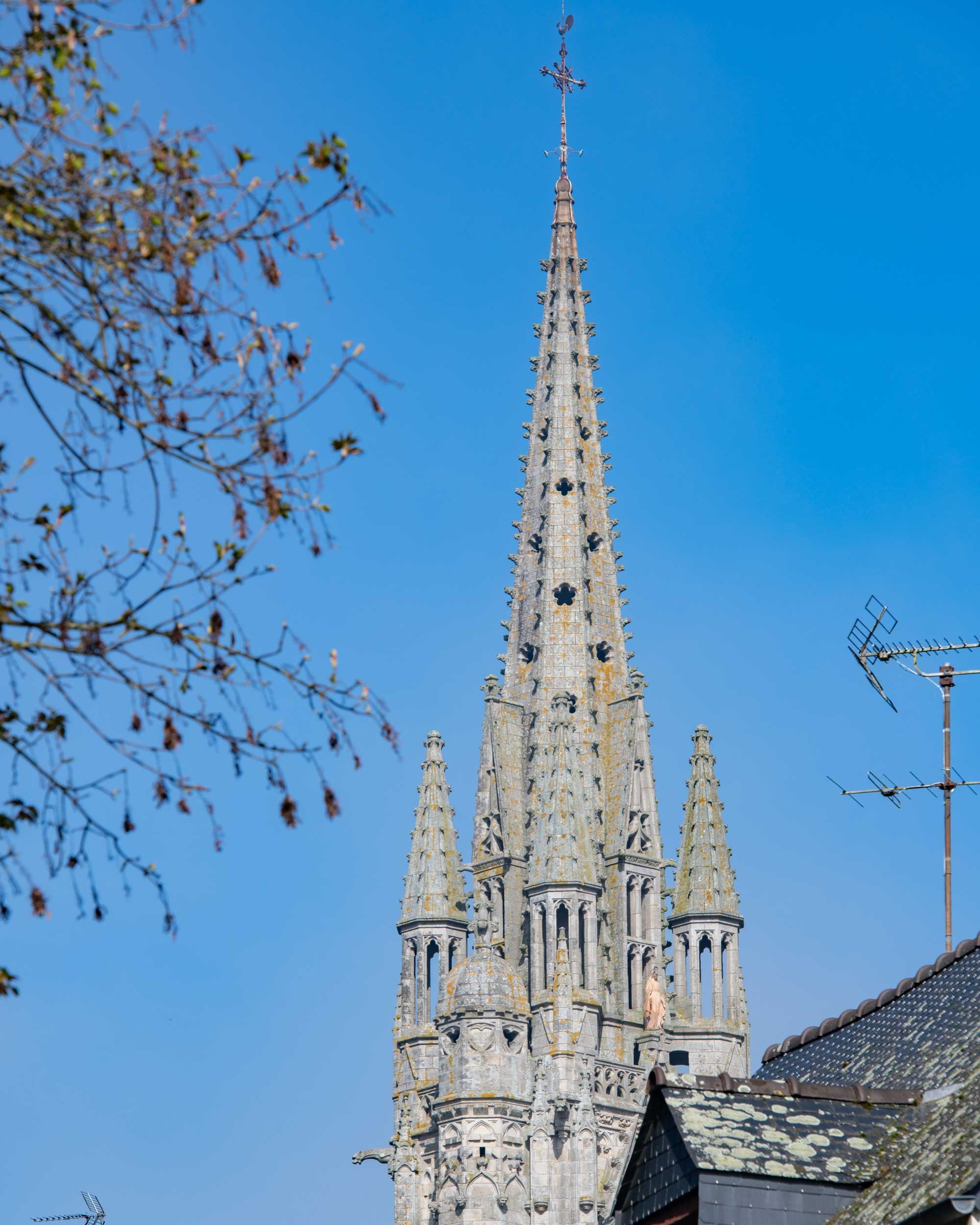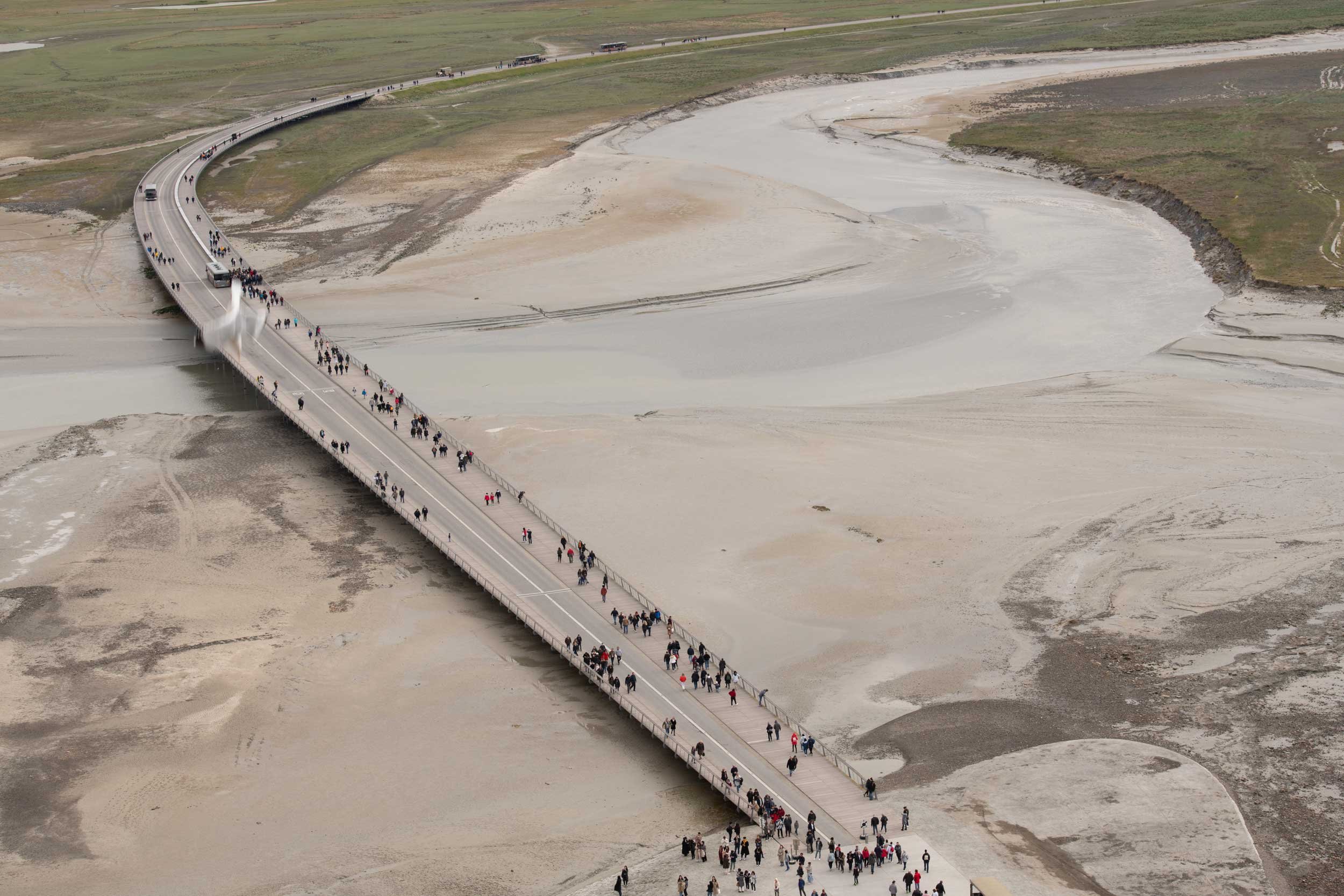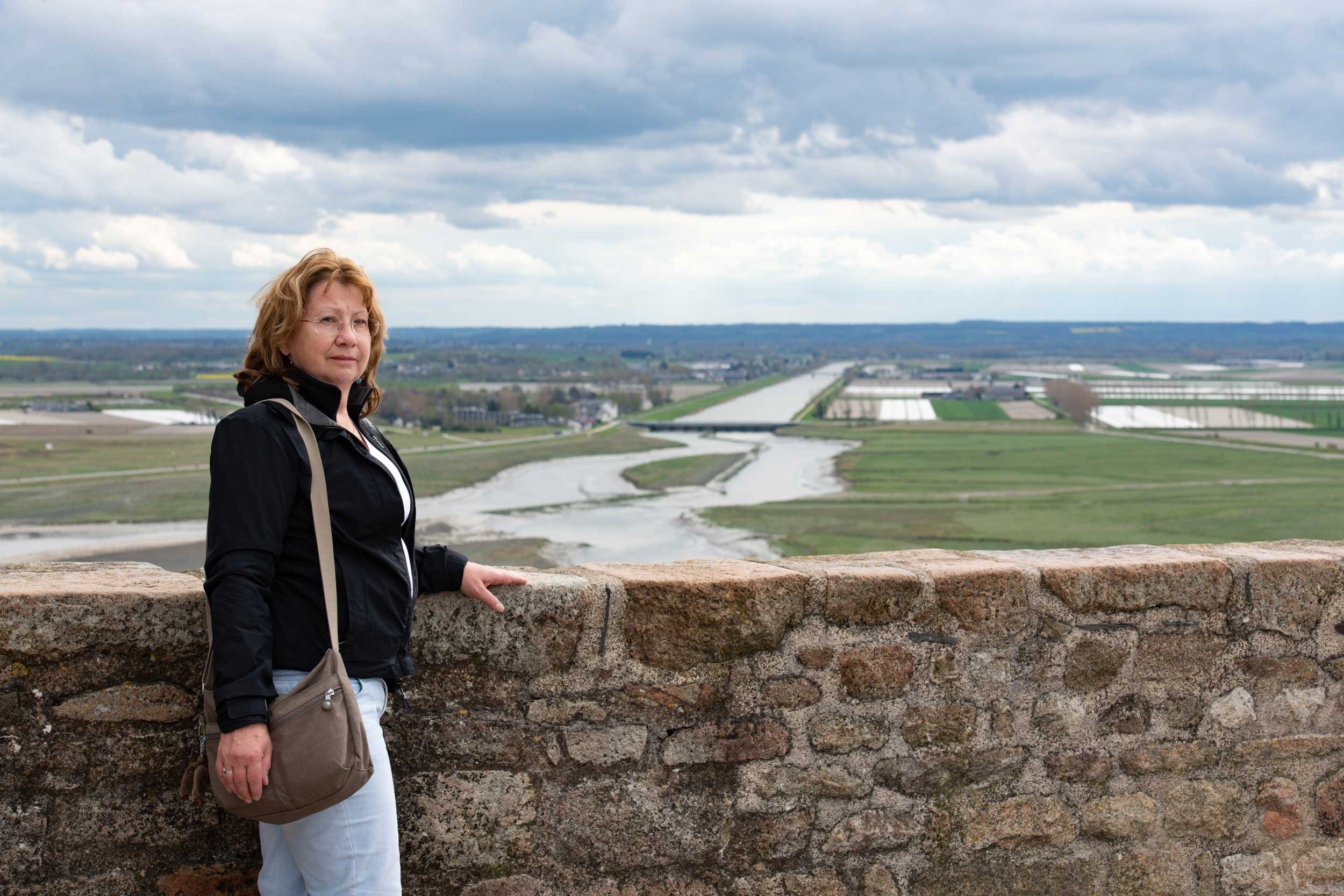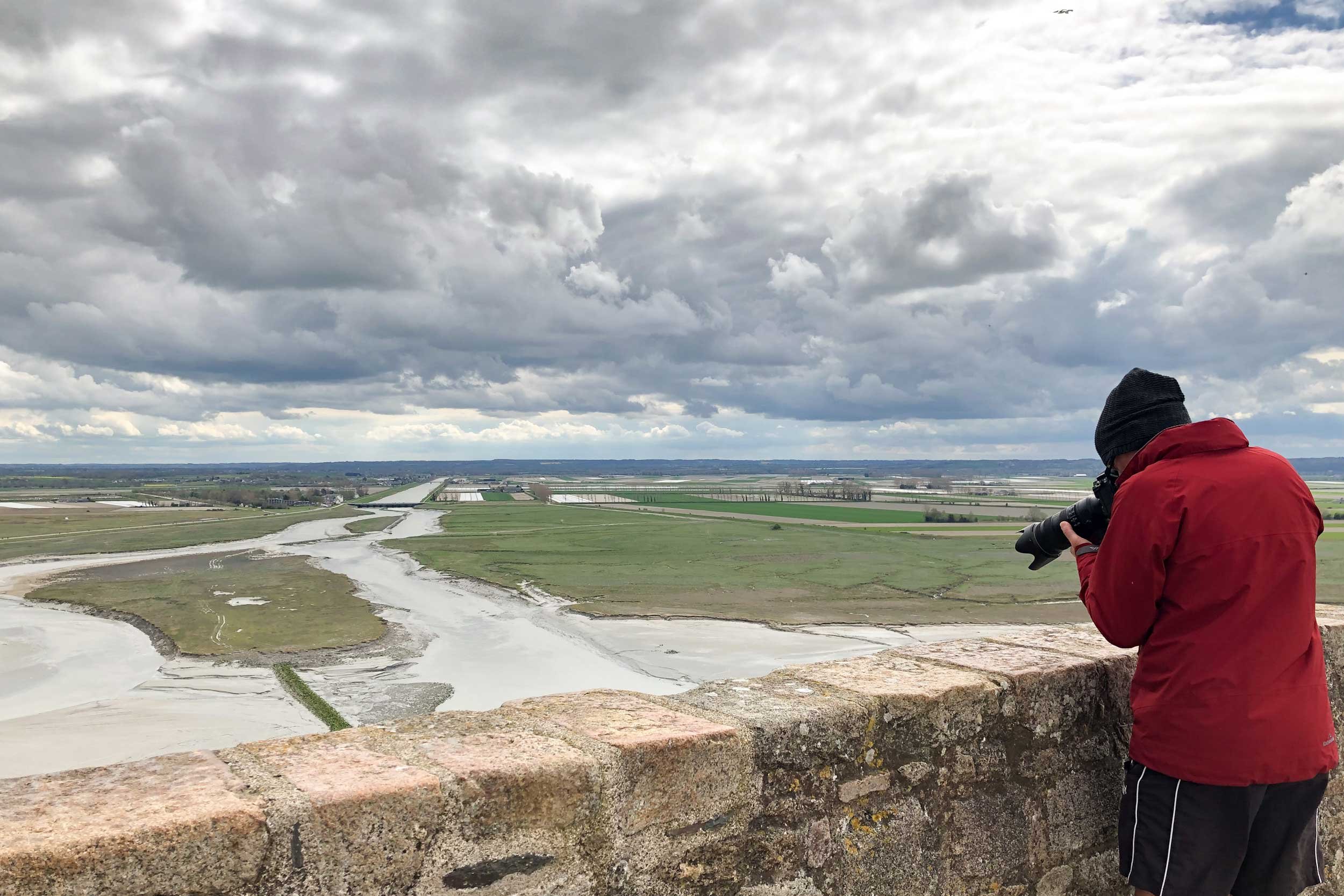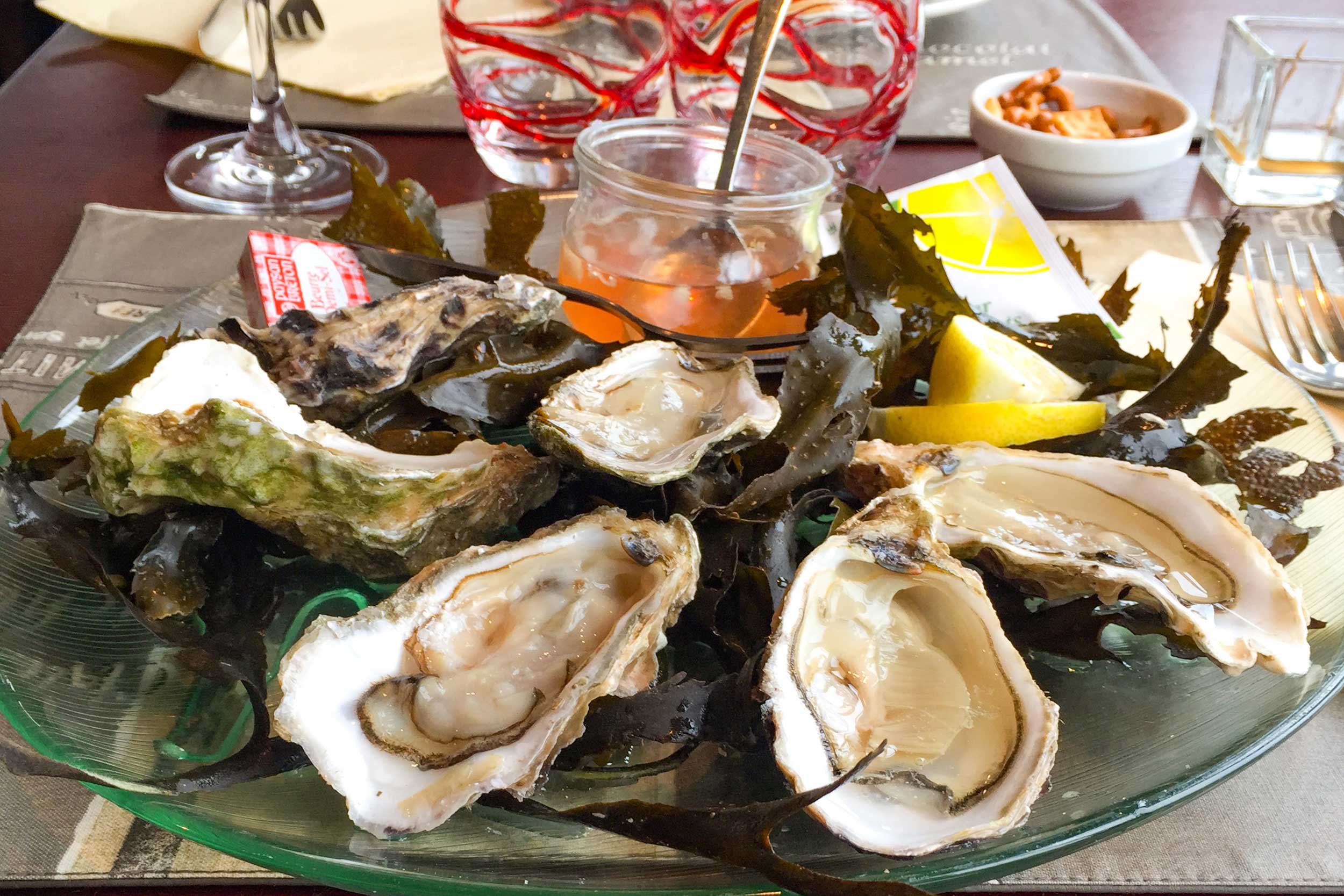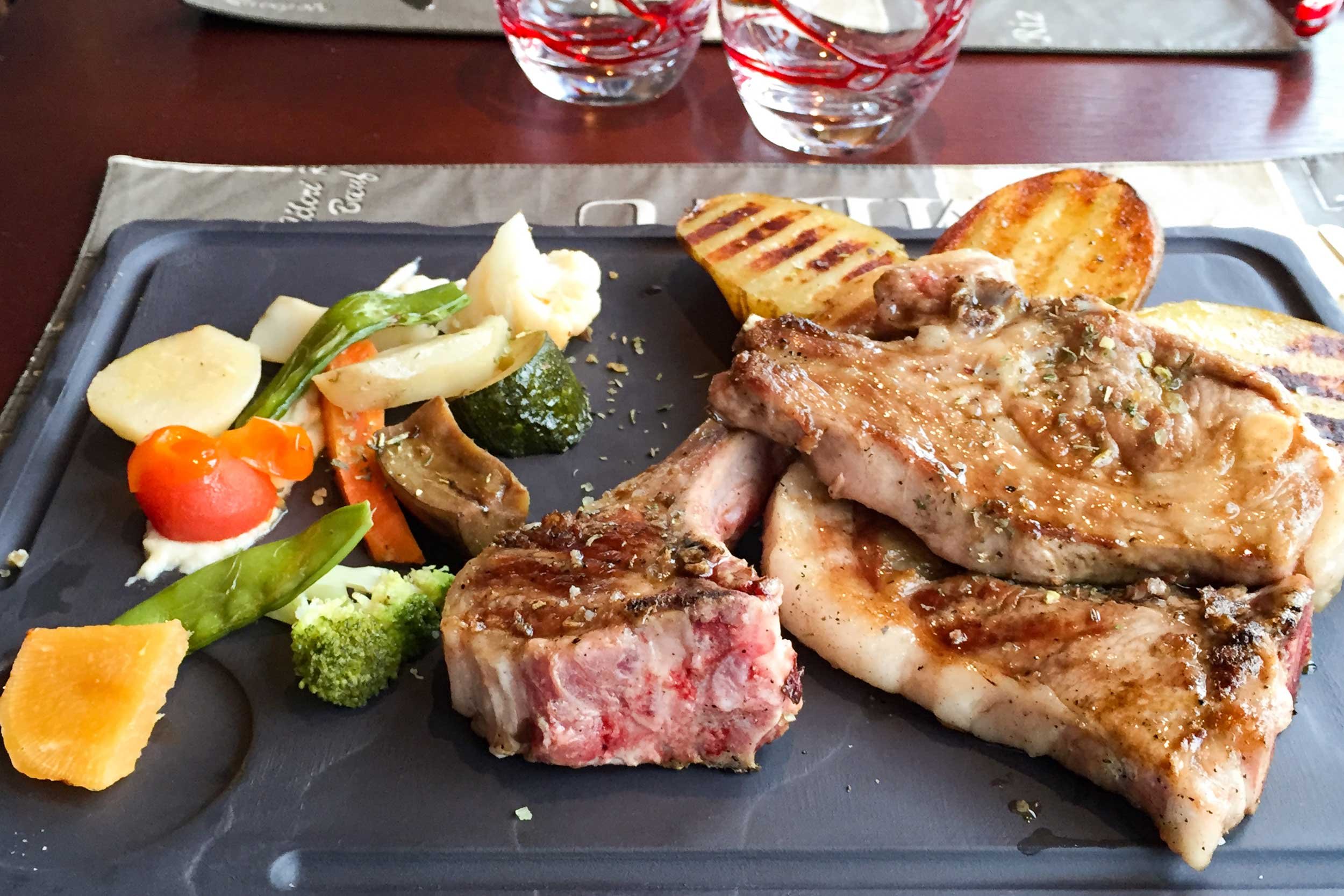Magnificent Mont-Saint-Michel
Mont-Saint-Michel is located 1 km off the coast of Normandy at the mouth of the river Couesnon and is linked to the mainland by Pont Passerelle du Mont Saint-Michel.
Chris and I had watched a few television shows, including ‘French Coastlines’, about Mont-Saint-Michel and decided to include a visit in our 2015 trip to France. It is a fascinating place, steeped in history and like no other place we have visited.
French Coastlines was a fabulous television series and we enjoyed it so much that we purchased the DVD set
In 2015, following our dinner on the mainland, we were able to drive to the Mont along the old dyke-road. On a summer evening in early June, light but not warm, we entered the old town of Mont-Saint-Michel. As we walked along the almost empty Grande Rue, we wished we had come across here for dinner as it was much more atmospheric than the mainland.
Chris entering the old town on the Mont
Across the drawbridge
On the almost deserted Grande Rue
Instead, we began to climb the many stairs to explore the Mont. Chris was slightly ahead and decided it would be fun to pop through a doorway to hide from me. I missed him, continued past and upwards. We had managed to lose each other in the complexity of pathways on the Mont.
Beginning the climb past one of the many historical buildings along the Grande Rue
And more stairs
Eventually, reunited at the car, we returned to our B&B. Our room had a great view of the Mont and we were able to enjoy a glorious sunset.
Then, at midnight, we drove out from our accommodation along the narrow road amongst the polders and dykes. It was quite eery. We found a spot where Chris was able to set up his camera on a tripod to capture a night photo of Mont-Saint-Michel. Unfortunately, it was so windy, his plan to take a time exposure photo was not possible because the camera was vibrating on the tripod. He had to take a high ISO snapshot instead. Ultimately, the result was fabulous anyway.
Mont-Saint-Michel by night
In the morning, with chickens clucking below our window, the view across the farm fields to the Mont was lovely. We enjoyed a delicious breakfast, including Madame’s homemade confiture (jam) with fresh baguette and croissants, before it was time to head off to our next destination, Saint-Malo.
Our view of Mont-Saint-Michel across the farm fields beyond our accommodation
Following this visit, a restoration project took place. When we arrived in 2019, we parked our car in the large carpark and caught a specially devised shuttle bus, called a passeur, most of the way across the new bridge. It stops 450m before the Mont and you walk the rest of the way. Alternatively, you can walk the whole way or take a horse-drawn carriage. It was early April, quite cold, and there were lots of tourists unlike our previous visit.
Once we alighted the shuttle bus, we had to walk the remaining 450m to the Mont.
Through the gates of the town, you walk along the Grand Rue, which is the route followed by pilgrims since the 12th century. It winds upwards towards the abbey and is lined with shops, restaurants, hotels and a museum. The steep cobbled street and many stairs make this difficult for people with a mobility issue.
We saw this unique fire engine at the base of the Mont
A private nook on the Mont
We visited the abbey, which was worth the climb. Then we strolled around the ramparts to take in the views across the mudflats and the bay. Lastly, we popped into one of the cafés, on the Grand Rue, to replenish ourselves before returning to the mainland. Watch this short clip for a birds-eye view of this magnificent site.
Inside and outside of the abbey
In summer, the Abbey of Mont-Saint-Michel remains open until midnight with lights and some classical concerts.
Mont-Saint-Michel showing the complexity of buildings
History of the site
The granite rock was originally called Mont Tombe. In 708, the Archangel Michael appeared in a dream to Saint Aubert, the Bishop of Avranches, and asked him to build a sanctuary in his name. In 966, a community of Benedictine monks settled on the rock and built a small church. A town soon developed and the first pilgrims arrived. The numbers of pilgrims increased and, in 1017, work began on the Romanesque church at the island’s highest point. It was built over its 10th century predecessor, the Chapel of Our Lady, resting on top of four crypts around the tip of the rock. In the 13th century, a three-storey monastery was built. Known as La Merveille (The Miracle), it includes a church, cloister, refectory and lodgings. The monks lived at the highest level, with noble guests on the middle level and soldiers and pilgrims on the lowest level. This created an intricate labyrinth of buildings on the rock. During this time, it was a renowned centre of learning, attracting pilgrims from afar.
The impressive fortifications protected the Mont from attacks from the English during The Hundred Years War (1337-1453).
The abbey fell into decline during the 16th century.
After the French revolution, in 1789, the abbey became a political prison for the next 73 years.
In 1874, the abbey was declared a national monument.
In 1895-7, the belfry, spire and statue of Saint Michael were added to the abbey.
The famous historical restaurant, ‘La Mère Poulard’, opened by Annette and Victor Poulard on Grand Rue in 1888. Annette’s world-famous recipe for puff omelette, cooked over a woodfire, has been kept secret for 130 years. Not only a restaurant, you can also stay here.
During WWII, the Mont was deserted by the civilian population and only German soldiers on leave visited here. The site was not affected by any bombardments.
In 1969, Benedictine monks returned to the Mont.
It has been a UNESCO World heritage site since 1979.
Looking up towards the abbey
Connecting the Mont to the mainland
Construction of a dyke-road to reach the Mont commenced in 1878 and reached the ramparts in 1879. Between 1901 and 1938 a small steam train operated between the mainland town of Pontorson and the Mont. In 1926, with the popularity of the motorcar, a large parking lot was established at the foot of the ramparts. This grew to accommodate many cars and coaches. A restoration project began to preserve the maritime character of the Mont and to cope with the silting of the bay. In April 2012, the large carpark at the foot of the ramparts was removed to allow the sea to surround the rock. In 2015, the old dyke-road was destroyed and replaced by a footbridge.
View in 2015
A large car park was built in 2016 on the mainland and now shuttle buses transport visitors across the new bridge to the Mont. Also, a dam was built to control the follow of water between the Couesnon estuary and the sea. It regulates the passing of the water so that it drags the sand, preventing it from accumulating at the base of the Mont. This is contributing to the conservation of local flora and fauna.
View in 2019
Tides
The bay experiences the highest tides in continental Europe. They can reach 15 metres during spring with speeds up to 10km/hour. The area attracts an abundance of sea and bird life with its varied environment, including mudflats and salt marshes. It is possible to walk across the bay at low tide and, if you choose this option, it is strongly recommended to use a guide due to the tides and quicksands. Guides can be booked through the local tourist office.
Crossing the mud flats of the bay on foot should be with a guide
Les Polders
Napoleon III granted the concession for the creation of 3000 hectares of polders in the Bay of Mont-Saint-Michel. A polder is a dutch word and refers to land reclaimed for sea. A polder needs to be surrounded by dykes, which prevent the penetration of sea water into the land. These very fertile lands are dedicated to the cultivation of market gardens growing vegetables; such as, carrots, potatoes, lettuce and pink shallots.
The landscape of polders and dykes
The salt meadows are characteristic of this area, which is regularly covered by the sea. Sheep farming has been conducted here since the Middle Ages. Le Grèvin, sheep of this area spend a large part of their lives grazing the salt meadows. This diet gives the flesh a unique taste. We tried some in 2015. but both agreed that we preferred the oysters.
For more information about Mont-Saint-Michel:
https://en.normandie-tourisme.fr/unmissable-sites/the-mont-saint-michel/
https://montsaintmichelrcm.com/Le%20Mont-Saint-Michel%20en%20ligne.htm.htm/
The mainland town has some hotels plus a variety of smaller accommodations, including camping. There is an information centre, restaurants and a biscuit factory in town.
In June 2015, we stayed at the B&B Ferme Saint-Joseph, set in amongst the polders, it is a market garden farm offering accommodation in both gîtes and chambres d’hôtes. It offers great views of Mont-Saint-Michel. The property has plenty of parking space, a pool, a games room and children’s play equipment.
In April 2019, we were staying in the wonderful town of Dinan, Brittany, and our visit was part of day trip that we took from our accommodation.
Next time, we head south to the spectacular Pyrénées.
À bientôt!








